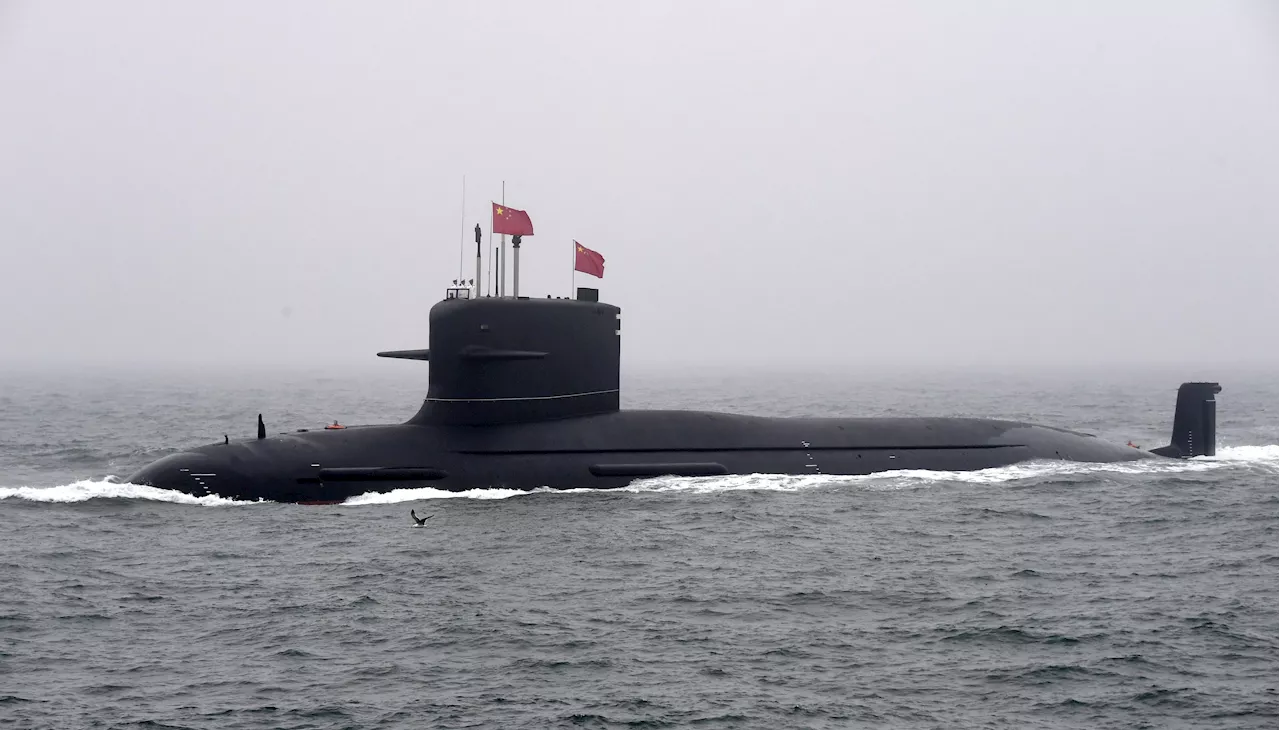For the first time, a group of U.S. researchers has concluded that China has built a land-based prototype nuclear reactor to power future aircraft carriers.
Residents raise safety concerns over power line-related fires in far West SidePleasant, but warm Veterans Day followed by a quiet weather weekRead full article: San Antonio veteran-owned family barbershop celebrates 76 years in business
FILE - In this photo released by Xinhua News Agency, China's third conventionally powered aircraft carrier, the Fujian, conducts a maiden sea trial on May 7, 2024. China’s navy is already the world’s largest numerically, and it has been rapidly modernizing. Adding nuclear-powered carriers to its fleet would be a major step in realizing its ambitions for a true"blue-water” force capable of operating in seas far from China in a growing global challenge to the United States.
“The reactor prototype at Leshan is the first solid evidence that China is, in fact, developing a nuclear-powered aircraft carrier," said Jeffrey Lewis, a professor at Middlebury and one of the researchers on the project."Operating a nuclear-powered aircraft carrier is an exclusive club, one that China looks set to join.”
Satellite mages from 2020 to 2023 have shown the demolition of homes and the construction of water intake infrastructure connected to the reactor site. Contracts for steam generators and turbine pumps indicate the project involves a pressurized water reactor with a secondary circuit — a profile that is consistent with naval propulsion reactors, the researchers say.
“From the identifying reports, co-location with other naval reactor facilities, and correlating construction activity, I think it can be said that it is likely the Longwei Project is housed at Base 909, and it could potentially be located at the identified building,” she said. The Type 003 Fujian, launched in 2022, was the country's third carrier and its first to be indigenously designed and built. It employs an electromagnetic-type launch system like those developed and used by the U.S. Navy. All three carriers are conventionally powered.
Nick Childs, senior fellow for naval forces and maritime security at the International Institute for Strategic Studies, said the Chinese “have taken an incremental approach to their carrier development with a number of ambitions that will evolve over time.” “As well as obviating the need for the ship to refuel regularly and therefore giving it much greater range, nuclear power means that without the need to carry fuel oil for the ship there will be room aboard for fuel and weapons for its aircraft, extending their capabilities,” Childs said.
The U.S. is obligated by a domestic law to supply Taiwan with sufficient weapons to deter invasion, and it could provide assistance to the island from its bases in the Pacific in the event of an invasion or blockade. Tensions also have risen in the South China Sea between China and neighboring nations over territorial disputes and maritime claims.
United States Latest News, United States Headlines
Similar News:You can also read news stories similar to this one that we have collected from other news sources.
 Satellite Photo Shows New Activity at China's Underground Submarine BaseNaval experts believe the base is equipped with a countermeasure washdown system for nuclear-powered submarines.
Satellite Photo Shows New Activity at China's Underground Submarine BaseNaval experts believe the base is equipped with a countermeasure washdown system for nuclear-powered submarines.
Read more »
 Satellite imagery shows mystery ship built in China amid breakneck naval expansionChina appears to have built a new and unusual aircraft carrier, intriguing experts with a potentially first-of-its-kind vessel that could add to Beijing’s rapidly expanding maritime power.
Satellite imagery shows mystery ship built in China amid breakneck naval expansionChina appears to have built a new and unusual aircraft carrier, intriguing experts with a potentially first-of-its-kind vessel that could add to Beijing’s rapidly expanding maritime power.
Read more »
 Meadowlands: US to unleash new jammers to take down Russia, China satellite threatsThe Meadowlands upgrade include measures to improve mission effectiveness, reduce the size of mobile units and also increase automation.
Meadowlands: US to unleash new jammers to take down Russia, China satellite threatsThe Meadowlands upgrade include measures to improve mission effectiveness, reduce the size of mobile units and also increase automation.
Read more »
 Here's what China launched to orbit on its retrievable satellite last month (video)Andrew is a freelance space journalist with a focus on reporting on China's rapidly growing space sector. He began writing for Space.com in 2019 and writes for SpaceNews, IEEE Spectrum, National Geographic, Sky & Telescope, New Scientist and others.
Here's what China launched to orbit on its retrievable satellite last month (video)Andrew is a freelance space journalist with a focus on reporting on China's rapidly growing space sector. He began writing for Space.com in 2019 and writes for SpaceNews, IEEE Spectrum, National Geographic, Sky & Telescope, New Scientist and others.
Read more »
 China’s first reusable satellite retrieved with scientific payloads after two weeksChina's space agency has announced the country's first reusable and returnable test satellite has returned after two weeks in orbit
China’s first reusable satellite retrieved with scientific payloads after two weeksChina's space agency has announced the country's first reusable and returnable test satellite has returned after two weeks in orbit
Read more »
 China's 'Thousand Sails' Joins Starlink as the Latest Mega-Satellite Constellation in OrbitWith 'Thousand Sails,' China joins the race to fill up Low Earth Orbit with mega-satellite constellations.
China's 'Thousand Sails' Joins Starlink as the Latest Mega-Satellite Constellation in OrbitWith 'Thousand Sails,' China joins the race to fill up Low Earth Orbit with mega-satellite constellations.
Read more »
